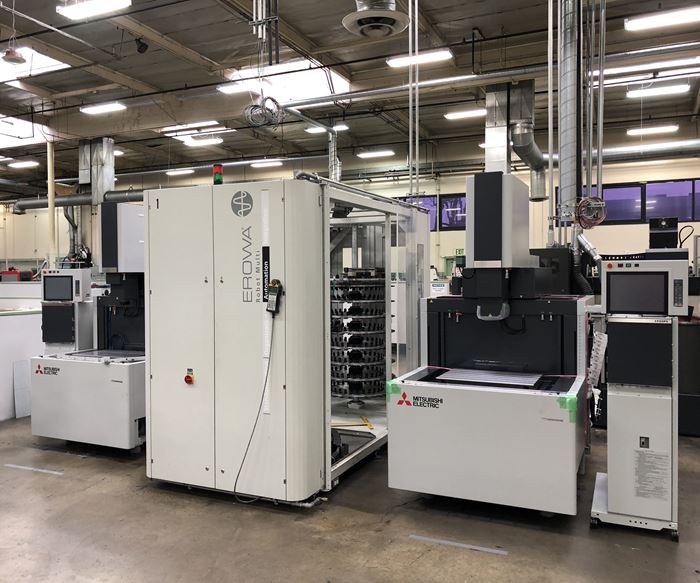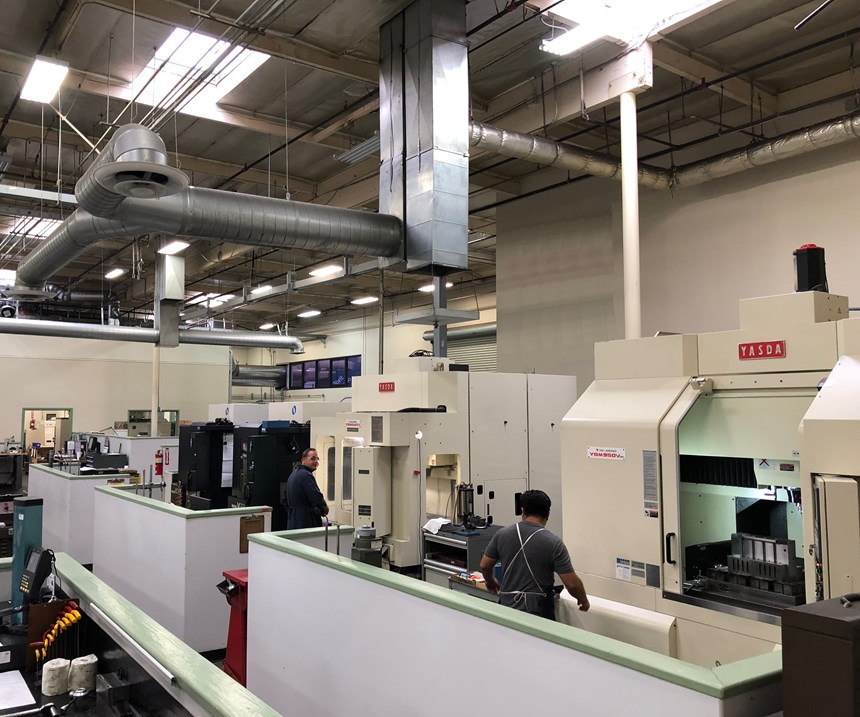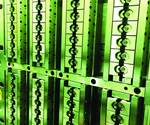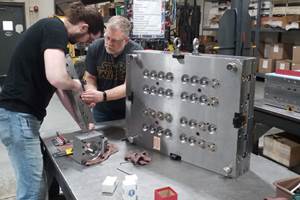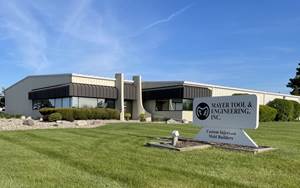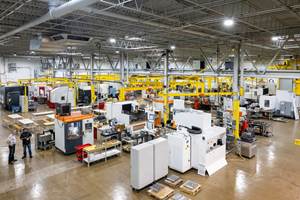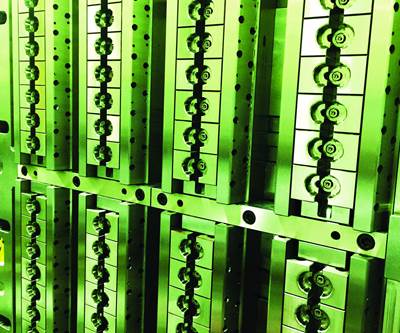Strategic Shifts Enable Growth for Fairway Injection Molds
Since its 2017 acquisition by Westfall Technik Inc., Fairway Injection Molds has been making many strategic changes to its infrastructure in preparation for growth.
A year ago, Westfall Technik Inc. (Westfall) acquired Fairway Injection Molds Inc. (Fairway), which originally was a family-owned business. How has this changed the way that Fairway operates and serves its customers?
Dave Cockrell, vice president and general manager: Being part of a larger group is good for Fairway, its employees and its customers. One of the nice things about having a partner company in Westfall Technik is that it is vertically integrated. We now have companies in place that start at the product-design level and migrate through prototype and development tooling and production tooling with Fairway and on to production molding. Several partners are doing production molding all the way through to executed, assembled products ready for shipment to the customer or potentially even to the customer’s distribution centers, depending on what is needed. So, it is kind of neat to be part of the value stream where some of our customers are our sister companies, and that is what makes it a little different regarding moldmakers getting bigger. For example, we have three molding machines used for sampling molds, but we do not have a clean room. If we had to do a mold trial for a customer in a clean room, all we have to do is call one of our sister companies and start making plans.
Many shops in the United States are family-owned and built up to a certain level, and then they are looking for that next step and next evolution. Sometimes it is difficult to figure out what that next step is going to be. Fairway landed with a group of plastics experts that truly value what Fairway is and what it can contribute. The goal of the company here is for Fairway to grow and become much larger than what it is today. The current management team at Westfall backs that up with very aggressive capital spending for the company. Through July this year, we have put in well over a million dollars’ worth of improvements, and we are not done. It is all an effort not only to solidify our current standing as a company but to do so with an eye on future expansion plans and where we want to be three years from now.
Describe some of the improvements that you mentioned.
Cockrell: We have made significant improvements already in our EDM group. For example, we added a new EDM cell with two new Mitsubishi sinker EDM machines that an Erowa robot serves. We also have purchased a brand new Yasda YBM950V hard-machining center for a total of three Yasdas, and we have worked on our infrastructure. We put in an all new compressed-air system, an all new chilled-water plant and an all new virtualized-computer server and backbone system, including new wiring, cabling, switches and so on. Every bit of our computer network is brand new.
We have an enterprise resource planning (ERP) system that we are in the process of implementing, and we plan to finish that and have the system be live as of January 2019. It is an IQMS ERP system and eventually, all eight of the companies currently under the Westfall umbrella will be interconnected in a network as one large company. The primary objective is on the financial side as it drastically simplifies the accounting process and the financial reporting process, but there are several other benefits that come with being on the software as well. We have every intention of employing many aspects of Industry 4.0 across Fairway and Westfall as a whole. AMA Plastics, one of our sister companies, would be regarded as the flagship company for IQMS implementation because every molding machine in its plant is integrated and monitored in real-time using the software. We are still evaluating how well it will work for mold shops and have been testing machine monitoring for the last two to three years. We expect that Fairway will roll out a comprehensive monitoring system within the next 12 to 18 months.
Fairway landed with a group of plastics experts that truly value what Fairway is and what it can contribute.
What does Fairway offer customers that sets it apart as a moldmaker?
Cockrell: One of the things that we do well for our customers is that we provide very accurate molds. One of the primary reasons for that is that we work in a temperature-controlled environment that only varies about ± one degree over 24 hours, and that is the entire production shop. We try to evaluate and purchase machines that do not vary by more than 0.0002 inch over 24 hours because those are machines that we can automate. Machine builders claim that their machines hold 0.0001 inch or 0.0002 inch, but the real test of any machine tool is how it performs over time. We put new machines through strenuous evaluation and they must be able to run unmanned and hold tolerance, otherwise we cannot use them. Our alternative is to regress and put an operator in front of the machine, which is going to cost more.
We do a lot of hard machining. We hard-machine shut offs, and we hard-machine molding areas. There is no hand-working of any of our parts when we use this process. There is no such thing as fitting. Everything is simply done, and the coordinate measuring machine (CMM) plays a critical role in how we get to that point. There is a demand for highly accurate mold components, so we invested in Zeiss CMMs to integrate into the manufacturing process. Our customers tell us that when they run our molds and they do their inspections, the CPK numbers that they get off the molded parts are typically better than what they expect because everything is basically the same. More often than not, our mold trials are one to two tests and then they are ready to ship.
Of note is that about 25 percent of our business, on average, is spare parts. This is because we can build the parts to the print and to the model with no hand-fitting, and the customer can take that part, drop it right in the mold and be back up and running at 100-percent cavitation. We also have mold designs that allow the customer to take the cavities and cores and the ejector pins out from the front face of the mold, and that allows them to get back up and running far more quickly than pulling the whole mold out and being down for a day or two. But, it all depends on the customer. If the customer really puts an emphasis on staying in production, then there are things that we can do to make sure that we put them in the best situation to stay in production. Some of our customers also have requirements that the molds have the ability to run for 10–20 million cycles before replacement, and we have been able to satisfy some of the toughest requirements to ensure long-lasting molds.Related Content
Father/Daughter Team Takes Mold Business into the Future
Innovation, personalized service and a team’s collective mold manufacturing experience earn customer loyalty for 56 years and set the business up for future success.
Read MoreOpenness to New Manufacturing Techniques Gives Mayer Tool & Engineering a Competitive Edge
This Michigan mold builder adapts, problem solves, brainstorms and collaborates to exceed customer expectations.
Read MorePartnerships Fuel Moldmaker’s Growth in Technology and Training
Family-owned precision moldmaker, now backed by Heico Companies, combines financial strength with precision expertise in thermoset and thermoplastic manufacturing, apprentice training, advanced automation and comprehensive services.
Read MoreCross Training, In-House Capabilities and Collaborative Design Move Helm Tool Forward
Cross-training, bringing it all in-house, molding and collaborative design are essential to Helm Tool's success.
Read MoreRead Next
Mexico: Manufacturing Mecca to the South
A mold-building perspective on Mexico’s manufacturing opportunities, trends and challenges.
Read MoreHow to Use Strategic Planning Tools, Data to Manage the Human Side of Business
Q&A with Marion Wells, MMT EAB member and founder of Human Asset Management.
Read MoreAre You a Moldmaker Considering 3D Printing? Consider the 3D Printing Workshop at NPE2024
Presentations will cover 3D printing for mold tooling, material innovation, product development, bridge production and full-scale, high-volume additive manufacturing.
Read More
